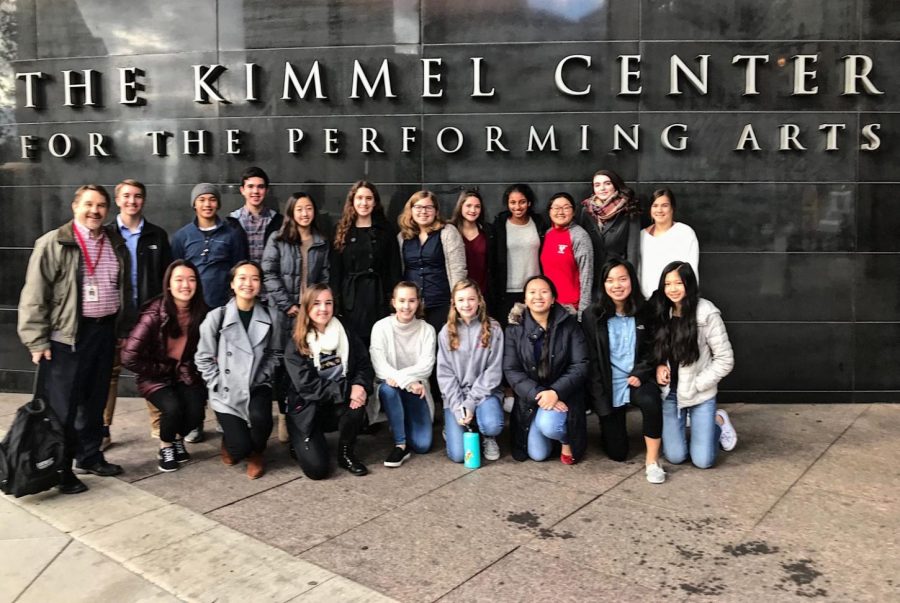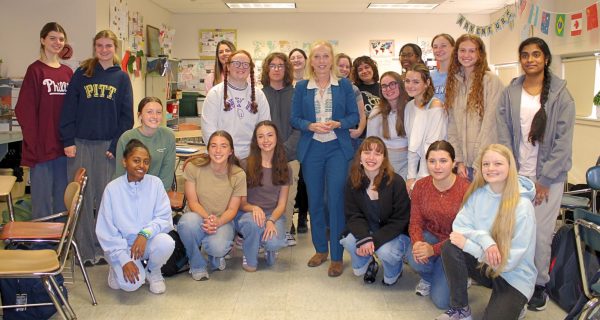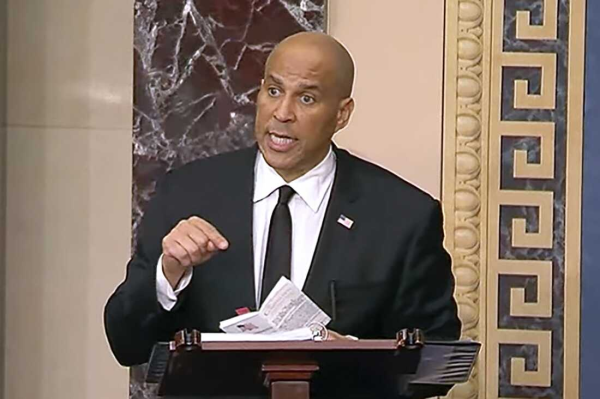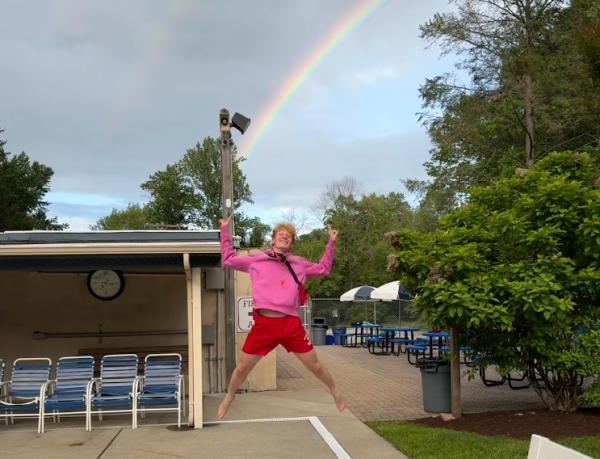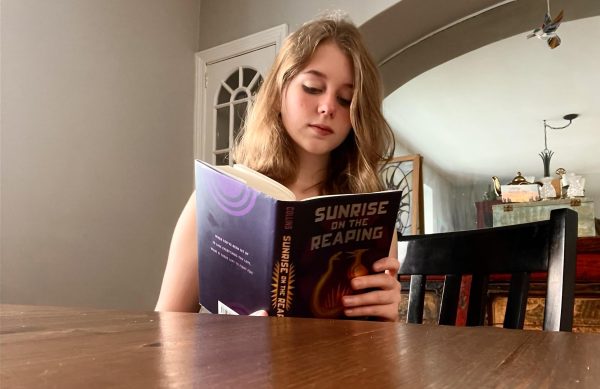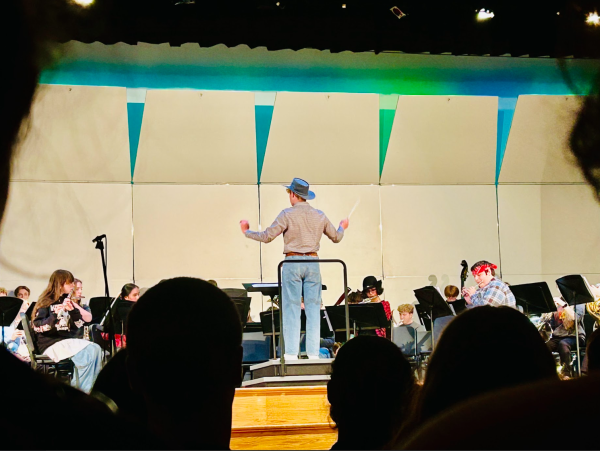Philadelphia Orchestra’s Barnes/Stokowski Festival Leaves String Ensemble Speechless
The world-renowned Philadelphia Orchestra offered a unique opportunity for Haverford High School’s String Ensemble to attend their open rehearsal on Thursday, October 4, during their two-week Barnes/Stokowski Festival at the Kimmel Center in Center City, Philadelphia.
As the ensemble attended the open rehearsal for the second time within a five-month period, students were able to enjoy the contrasting repertoire, this time with actors rehearsing on stage to depict the story of two innovators in art and music during the early 20th century. String Ensemble members got the opportunity to absorb the historical culture of the arts portrayed through a variety of music with a broad range of dynamics and acting.
Dr. Albert C. Barnes, a former resident of Philadelphia, founded the Barnes Foundation in 1922 to advocate education in contemporary art and display his collection of Impressionist and Post-Impressionist paintings – some of which included African sculpture and horticulture – from various artists overseas.
Leopold Stokowski, director of the Philadelphia Orchestra during the early 20th century, expanded the orchestra and presented new interpretations of music within his conducted performances. Both Barnes and Stokowski supported one another’s performances or art galleries by being frequent attendees and exchanging letters about modern art or music. Barnes and Stokowski’s relationship was portrayed through a theatrical performance during brief intermissions of the orchestra’s music.
The Philadelphia Orchestra, led by Principal Guest Conductor Stéphane Denève, kicked off their rehearsal with The Creation of the World, a ballet composed in 1923 by Frenchman Darius Milhaud, who became inspired by American jazz during his visit to Harlem, New York City. The performance consisted of five components – Chaos before Creation, Lifting Darkness and Creation of Trees, Plants, Insects, Birds, and Beasts, Man and Woman are Created, The Desire of Man and Woman, and The Kiss – that illustrated a sequence of romance build-up. The art sketches that corresponded to the music were displayed on large screens to enhance the nature of the performance.
An uncommon opportunity the String Ensemble had the privilege to enjoy was listening to Francis Poulenc’s Organ Concerto. Even more enticing was the on-screen display of the organist Peter Richard Conte’s effortless movements of the hand and feet on the organ’s keys.
Pearl Park, a cellist in the String Ensemble, said, “It never occurred to me how different the organ was from the piano. That is, the sound frequency and the amount of effort and practice it must have taken to master the precision on the keys of the organ”.
The String Ensemble concurred in attending this particular open rehearsal of the Philadelphia Orchestra primarily because of the finale piece on their program, The Rite of Spring, a ballet piece composed by Igor Stravinsky, and introduced to Philadelphia in the early 1920s by Stokowski. Not only was this piece special because it commemorated the nearly century-old anniversary of its premiere, but also because the String Ensemble performed an abridged version of it in 2017-2018.
“Hearing The Rite of Spring from the professionals was amazing,” Park said. “I loved watching the synchronized bow movements and the amount of crescendo and decrescendo in the piece.”
Oli Horyn, a bass player of the String Ensemble, reflected on her experience.
“The performance was completely unpredictable. As compared to Pines of Rome, which was a relatively linear piece, the build-up to the final moment when the brass played out over the edges of the levels in Verizon Hall was where all the goosebumps had been set aside for,” Horyn said. She added, “The Rite of Spring would transition from peaceful soft strings and woodwinds to fortissimo percussion and low brass in a split second. Although I have seen this before in a concert, I still got the chills when I listened to the numerous quick jumps of dynamics.”
String Ensemble Conductor, Joseph Brennan’s popular saying, “Be the duck on the pond” was manifested in the Philadelphia Orchestra’s performance. Similar to the image of a duck gliding naturally through a pond but with their hidden feet kicking arduously beneath the water, the musicians of the Philadelphia Orchestra made playing their instruments appear simple on the surface, when in reality, they rehearsed strenuously to perfect every rhythm and note.
The Philadelphia Orchestra’s performance has once again left the members of the String Ensemble speechless. The synchronization of hand movement, immaculate rhythm, professionalism, and high level of musicianship among the nearly 100 musicians in the orchestra, magnifies the String Ensemble members’ love for music and inspires them to aim high in their musical endeavors.



